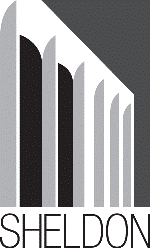Fine and Performing Arts, Hixson-Lied College of

Sheldon Museum of Art: Catalogs and Publications
Date of this Version
1995
Citation
Sheldon Memorial Art Gallery and Sculpture Garden, 1994-95
Abstract
The title of this exhibition, From Statues to Sculpture, su~gests the evolution of three-dimensional art, from 19th-century statues that inspire moral fortitude, celebrate historic events and evoke spiritual enlightenment, to sculpture that questions those verities and poses new definitions of reality. From Statues to Sculpture comprises 20 works dating from 1860 to 1988. This selection from the permanent collection of the Sheldon Memorial Art Gallery represents a diversity of issues and developments in American sculptural history, from historic monuments to abstract figuration, from images of landscape to architectural forms.
Sculpture is one of the oldest visual art media. It is found in all ancient cultures as both utilitarian and sacred objects. During the Renaissance sculpture was often intrinsic to architecture, incorporated with the structure to articulate the symbolic import of a cathedral or government building. In the United States, these traditions were reinforced by American art students who typically studied in Germany, Italy or France until the early 20th century. They emulated European styles of public art and by the mid 1800s, as a result of the Industrial Revolution and the burgeoning middle class, began to apply the techniques of monumental works to small-scale sculpture. John Quincy Adams Ward's The Indian Hunter, 1860, typifies the work of an American sculptor who was trained in Paris and returned to the United "States to create small-scale bronze works for middle-class homes. Similarly, Daniel Chester French's Abraham Lincoln, a diminutive version of the monument at Nebraska's capitol, while executed five decades later, retains the traditional standards of veracity and authority found in 19th-century public sculpture.
By 1900, with modernism becoming a universal influence, sculpture was perceived as an art that could have intrinsic motivations, and need not always edify or commemorate. Though Americans such as Hoffman and Calder continued to study in Europe and especially in Paris, they combined traditional techniques with progressive styles, making dramatic advances by virtue of their proximity to the Impressionists, Fauvists, and Cubists. The Armory Show of 1913 in New York, which traveled to Chicago and Boston, included a wealth of American and European sculpture. This one exhibition helped to determine the independent course of American sculpture, providing sculptors with new references that would lead them to an indigenous imagery and a distinct version of modernism. Americans Man Ray, John Storrs and Alexander Archipenko set a new pace for sculptural innovations, bringing Dada, and abstraction into the forefront of the New York art world. Since the 1950s, Americans have made major contributions to international sculpture. Artists such as Donald Judd, Robert Rauschenberg and Mark di Suvero helped determine the course of 20th-century sculpture, making American artists the mentors for several generations of younger sculptors, like Joel Shapiro and Tony Berlant Also included are folk art works. The 19th-century Horse by an unknown sculptor, and Two Bird Totem by Homer Green bracket more than a century of American works by untrained sculptors whose intuitive works are as compelling as those by their more sophisticated peers. Within the Hispanic-American folk tradition is George L0- pez's Saint Raphael, a carved santos figure that indicates the breadth of influences found in the history of American sculpture.


Comments
All images are copyright by the original artists. Publication copyright 1995 The Regents of the University of Nebraska